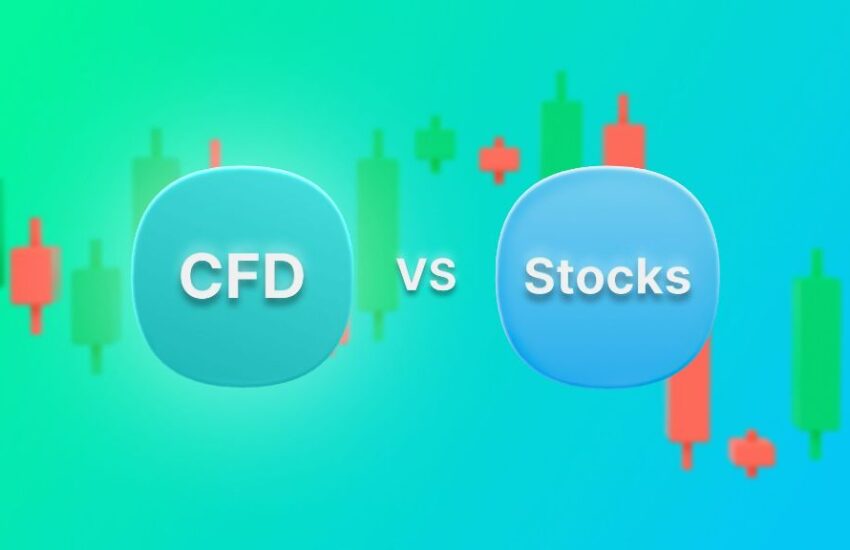Trading Share CFDs based on news events is a popular approach for many traders. News trading takes advantage of the market’s often rapid and volatile reactions to economic announcements, earnings reports, or geopolitical developments. When executed effectively, this strategy can yield quick profits, but it also carries inherent risks due to market unpredictability. Understanding how to navigate the fast-paced world of news trading can help you make the most of these opportunities while minimizing your risks.
Why News Trading Works for Share CFDs
The financial markets react quickly to news events, particularly those that influence investor sentiment or company fundamentals. For Share CFD traders, news offers a chance to capitalize on sharp price movements in either direction. With the ability to go long or short, Share CFDs allow traders to profit whether the market responds positively or negatively to the news.
Unlike traditional share ownership, CFDs let you trade on leverage, meaning you can magnify returns from relatively small price movements. However, this also increases the importance of managing your risk effectively when trading news-driven events.
Types of News Events to Watch
Successful news trading starts with knowing what to look for. Here are some key types of news events that can significantly impact share prices:
Earnings Reports – Quarterly earnings reports are a major driver of stock price movements. Surprises—whether positive or negative—can cause sharp shifts. For instance, a company that beats analyst expectations might see its share price soar, while disappointing results can lead to a sell-off.
Economic Data Releases – Data such as GDP growth, employment figures, and inflation rates influence overall market sentiment. For Share CFDs, macroeconomic indicators can impact entire sectors, such as retail or manufacturing, depending on the data released.
Mergers and Acquisitions (M&A) – News of mergers or acquisitions often leads to significant price movements. The acquiring company’s stock might drop due to potential costs, while the target company’s shares may surge on a premium offer.
Geopolitical Events – Political instability, trade disputes, or regulatory changes can cause widespread volatility. Share CFDs tied to companies operating in affected regions or industries are particularly vulnerable.
Product Launches and Innovations – Announcements about new products, technologies, or strategic partnerships can influence the share price of specific companies, particularly in sectors like technology and healthcare.
Risk Management for News Trading
While news trading offers opportunities for quick profits, it also comes with heightened risks due to volatility and potential slippage. Here are some risk management tips to keep in mind:
- Set Stop-Loss Orders: Protect your capital by placing stop-loss orders at a reasonable distance from your entry point. This limits your potential losses if the market moves against you.
- Trade with the Trend: In highly volatile conditions, aligning your trades with the prevailing trend can reduce the likelihood of being stopped out prematurely.
- Avoid Overleveraging: Trading on leverage amplifies both profits and losses. Use leverage cautiously, especially during major news events, to avoid significant drawdowns.
- Stay Informed: Monitor breaking news and updates in real time. Market sentiment can shift quickly, so staying ahead of the curve is crucial.
Tools for Effective News Trading
Economic Calendar – An economic calendar lists key events and their expected impact on the market. Use it to plan your trades around high-impact announcements.
News Feeds – Real-time news feeds, such as Bloomberg or Reuters, provide immediate access to breaking news, ensuring you’re among the first to react.
Technical Analysis – While news is the primary driver in this strategy, combining it with technical analysis can enhance your decision-making. For example, identify support and resistance levels to anticipate where the price might stabilize after a sharp move.
Volatility Indicators – Indicators like Bollinger Bands or Average True Range (ATR) can help gauge market volatility, allowing you to adjust your position size and stop-loss levels accordingly.
News trading can be an exciting and profitable strategy for Share CFDs, offering opportunities to capitalize on sharp price movements driven by market events. However, it requires preparation, quick thinking, and disciplined risk management. By understanding the types of news that move markets, developing strategies for different scenarios, and utilizing the right tools, you can navigate the fast-paced world of news trading with confidence.
